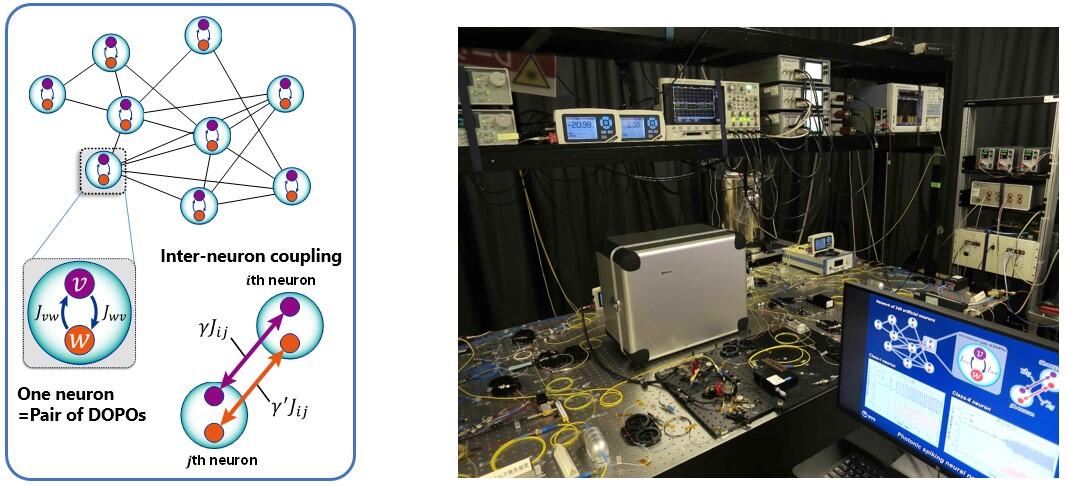NTT, in collaboration with Kazuyuki Aihara from the University of Tokyo, Deputy Director of the University of Tokyo Institutes for Advanced Study International Research Center for Neurointelligence (WPI-IRCN), successfully created an artificial optical neuron that can simulate the firing signal (spikes) observed in the nerve cells (neurons) of the system by using a degenerate optical parametric oscillator (DOPO), a type of optical oscillator. The result was published in the British scientific journal Nature Communications on April 23. This study was conducted as part of a research and development program by Yoshihisa Yamamoto, Program Manager of the Impulsing Paradigm Change through Disruptive Technologies Program (ImPACT) led by the Cabinet Office CSTI.
Neurons exchange information by observing point-process electrical signals with sharp peaks and this signal is the firing signal or 'spike'. In general, the firing dynamics of this neuron are broadly divided into two classes based on their response to external stimuli. This is called the Hodgkin classification, named after the pioneering researcher who studied nerve cells mathematically. In this study, NTT and the University of Tokyo jointly created the DOPO neuron, in which both firing modes can be freely controlled with a simple adjustment of the light intensity of the pump to be injected. This enables the adjustment of the firing frequency of artificial neurons, an important parameter of brain-type information processing, by controlling the firing mode. They also explain that, while in a general neural network, one firing mode is fixedly assigned to one neuron, the DOPO neurons can freely and flexibly control such firing modes and these characteristics can be applied to a new brain-type information processing system.
In particular, although Hodgkin's classification is simple and clear, the effect of differences in firing modes on information processing is often unclear from a neuroscientific perspective; therefore, a new way to tackle this mysteryis required. This will also potentially provide a research platform. In this study, a network of DOPO neurons was constructed by connecting 240 more optical neurons and synchronization phenomenon in which a group of neurons fire simultaneously was observed. It was found that DOPO neurons spontaneously change the firing mode of each, reflecting the synchronization between connected neurons without adjusting the pump light. This spontaneous change is not a single neuron; rather, it is a characteristic acquired by the population via synchronization that signifies a cooperative phenomenon in which the firing mode automatically changes to promote group synchronization without the need for parameter adjustment such as pump light. The automatic adjustment function of the ignition mode identified here reveals that the physical phenomenon of synchronization dynamically adjusts the ignition frequency like an algorithm in a computer. This suggests that the variety of firing modes has a marked influence on brain-type information processing. It is also expected that DOPO neurons as a group that can freely control the firing mode can be applied to more efficient brain-type information processing.

Credit: NTT. The University of Tokyo.
This article has been translated by JST with permission from The Science News Ltd.(https://sci-news.co.jp/). Unauthorized reproduction of the article and photographs is prohibited.




